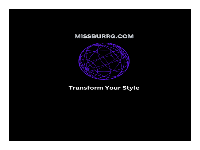
Among the most notable transformations in recent years has been the rise of Generation Z (Gen Z), a cohort born roughly between the late 1990s and the early 2010s. This generation has birthed a unique lexicon that reflects their values, experiences, and the digital world they inhabit. This article will explore the origins, characteristics, and impact of Gen Z slang, shedding light on what these terms mean and how they shape communication.
The Origins of Gen Z Slang
To understand Gen Z slang, it’s essential to first consider the context in which it developed. Gen Z is the first generation to grow up with the internet and smartphones as a fundamental part of their daily lives. Social media platforms like TikTok, Instagram, and Snapchat have not only changed how people communicate but have also become breeding grounds for new words and phrases.
The rapid spread of information online, particularly through memes and viral content, has allowed slang to evolve at an unprecedented pace. Unlike previous generations, which saw linguistic changes occurring over years or decades, Gen Z has experienced the creation and popularization of new terms in real time. This phenomenon is partly due to the democratization of language facilitated by the internet, where anyone can contribute to the linguistic conversation.
Characteristics of Gen Z Slang
Gen Z slang is characterized by its creativity, brevity, and playfulness. Many terms are born from a combination of existing words, abbreviations, and internet culture. Here are some defining features of Gen Z slang:
1. Creativity and Playfulness
Gen Z often employs wordplay, puns, and neologisms (newly coined terms) to express ideas in humorous or exaggerated ways. This playful approach allows them to convey complex emotions or situations in a succinct manner. For example, the term “sus,” derived from “suspicious,” became popular through the game Among Us and is used to describe someone who seems deceitful or untrustworthy.
2. Abbreviations and Acronyms
A hallmark of Gen Z slang is the use of abbreviations. The fast-paced nature of online communication encourages brevity, leading to the widespread use of acronyms. For instance, “FOMO” (fear of missing out) and “YOLO” (you only live once) capture complex sentiments in just four letters.
3. Inclusivity and Fluidity
Gen Z is notably more inclusive and aware of social issues than previous generations. Their slang reflects this by incorporating language that is sensitive to issues of race, gender, and sexuality. Terms like “woke,” which denotes awareness of social injustices, have become part of everyday vernacular.
Moreover, Gen Z slang is fluid; words can change meaning or fall out of use rapidly. This dynamism reflects the transient nature of internet culture, where trends can arise and fade within days.
4. Influence of Internet Culture
Many Gen Z slang terms originate from memes, TikTok challenges, and viral videos. This connection to digital culture means that understanding Gen Z slang often requires familiarity with current trends and online references. For instance, the phrase “it’s giving” is frequently used to describe a vibe or aesthetic, often derived from fashion and beauty contexts popularized on social media.
Popular Gen Z Slang Terms
To illustrate the richness of Gen Z slang, let’s explore some commonly used terms and their meanings:
1. Bet
Originating from urban slang, “bet” is used to express agreement or affirmation. It’s akin to saying “okay” or “sounds good.” For example, if someone suggests going to a party, a response of “bet” indicates enthusiasm or approval.
2. Flex
To “flex” means to show off, whether it’s one’s possessions, achievements, or physique. The term has evolved from its original context related to physical strength and is often used in a playful or ironic manner. For instance, “She’s flexing her new shoes” suggests that someone is flaunting their new purchase.
3. No Cap
“No cap” signifies honesty or authenticity, often used to emphasize that someone is being truthful. For instance, “I’m not joking, no cap” indicates that the speaker is serious and not exaggerating.
4. Lit
While “lit” has been around for a while, Gen Z has revitalized its use, particularly to describe parties or events that are exciting and fun. For example, “The concert was lit!” conveys that the experience was exhilarating.
5. Slay
To “slay” means to do something exceptionally well, often used in the context of fashion or performance. Saying “You slayed that outfit!” indicates admiration for someone’s appearance.
6. Ghosting
“Ghosting” refers to the act of suddenly cutting off communication with someone without explanation, particularly in dating scenarios. The term captures the feelings of confusion and frustration that often accompany such behavior.
7. Vibe Check
A “vibe check” is an informal assessment of the atmosphere or feelings within a group or situation. It can also refer to gauging someone’s mood. For instance, “Let’s do a vibe check on the party” implies that someone is assessing the overall energy.
8. Simp
A “simp” is someone who shows excessive sympathy and attention toward someone they like, often to the detriment of their own interests. While the term can have derogatory connotations, it is also used humorously among friends.
9. Drip
“Drip” describes a person’s style or fashion sense, particularly when someone is dressed in a fashionable or trendy way. “He’s got the drip” means that someone is stylish or has a great sense of fashion.
10. Shade
“Throwing shade” means to subtly express contempt or criticism toward someone without being overtly confrontational. For instance, “She threw shade at his outfit” suggests that someone made a backhanded comment about another person’s clothing.
The Impact of Gen Z Slang
The rise of Gen Z slang has far-reaching implications for communication, culture, and even marketing strategies. Here are some ways this new lexicon is making an impact:
1. Shaping Communication
Gen Z slang is reshaping how people communicate, particularly among younger generations. The emphasis on brevity, creativity, and humor makes conversations more engaging and relatable. This shift can lead to more open and authentic exchanges, as slang often conveys emotions and sentiments that traditional language may not capture as effectively.
2. Cultural Commentary
The slang used by Gen Z often reflects their values and social consciousness. Terms like “woke” and “cancel culture” highlight the generation’s awareness of social issues, indicating a shift toward more conscientious discourse. This linguistic evolution can spark conversations about societal norms and expectations, encouraging deeper engagement with critical issues.
3. Marketing and Branding
Understanding Gen Z slang is crucial for brands aiming to connect with younger consumers. Companies that incorporate current slang into their marketing strategies can resonate more with Gen Z audiences. For example, brands using TikTok influencers or crafting campaigns around popular slang terms can create a sense of relatability and authenticity that fosters brand loyalty.
4. Intergenerational Communication
As Gen Z enters the workforce and societal roles, their slang influences intergenerational communication. Older generations may need to adapt to this new lexicon to bridge gaps and foster understanding. Conversely, using slang can help younger individuals establish rapport and connect with older colleagues or authority figures.
The Future of Gen Z Slang
As language is continually evolving, the future of Gen Z slang will likely reflect ongoing cultural shifts, technological advancements, and social changes. Here are some potential trends to watch for:
1. Continued Evolution
Just as language has changed rapidly over the past few years, Gen Z slang will continue to evolve. New terms will emerge, and existing ones may fall out of favor. Staying updated on trends through social media will be crucial for anyone looking to keep pace with the changes.
2. Global Influence
The internet has created a global platform for communication, meaning that Gen Z slang can transcend geographical boundaries. Words and phrases may cross cultures, leading to a more diverse and interconnected linguistic landscape. This globalization may result in hybrid slang, combining elements from different languages and cultures.
3. Integration with Technology
As technology continues to evolve, so too will the language used to navigate it. Future slang may emerge from advancements in virtual reality, augmented reality, and AI, further shaping communication styles. For instance, new slang may arise from experiences unique to virtual environments.
4. Shifting Social Norms
As societal values continue to evolve, so will the language used to express them. Gen Z’s awareness of issues such as mental health, climate change, and social justice will likely influence the development of new slang. Terms that reflect these themes may gain traction, highlighting the ongoing relationship between language and culture.
Conclusion
Gen Z slang represents more than just a collection of trendy words; it reflects a generation’s values, experiences, and cultural context. As the digital landscape continues to shape communication, understanding and embracing Gen Z slang can foster deeper connections and engagement across generations. While the terms may change over time, the creativity, playfulness, and inclusivity embedded within Gen Z slang will likely leave a lasting mark on the evolution of language. By paying attention to this dynamic lexicon, we can gain insight into the perspectives and priorities of a generation that is shaping the future.









